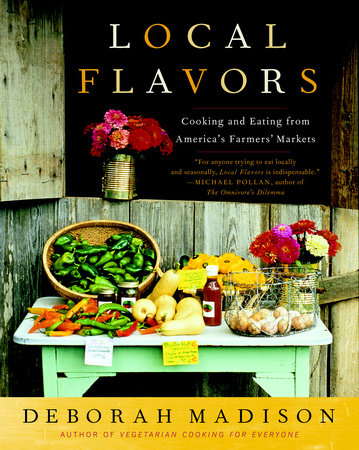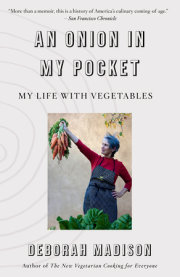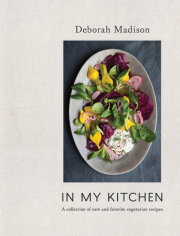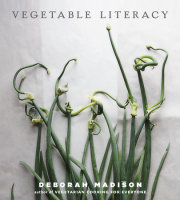Greens Wild and DomesticIt's spring, and farmers' markets across the country are beginning to open. Greens are the vegetables that many will start out with. They're what you can count on finding early in the season. And depending on where you live, greens may flourish throughout the duration of the market, or they may disappear as soon as some real heat comes on. Greens like it cool, and some even like it cold. Salad greens are a huge challenge in Phoenix past March, which is just when they're looking great in Santa Monica. They might be diminishing in Sacramento by about June, but in Santa Fe or Londonderry, Vermont, they're with us from start to finish.
A key sign that it's spring isn't only that greens are available but that they have an irrepressible quality. They practically glow. I've picked up bunches of kale that squeak with vitality, spinach and chard that bounce with life. The arugula is nutty, not bitter; chicories have a sweet edge from the last frost of the season. Green potherbs, like sorrel, nettes, and wild spinach, are tender and delicate, and the deep reds of the red lettuces, like Merlot, haven't lost their luster as long as there are those nightly temperature dips. This is also when you might find miner's lettuce, chickweed, and other edible weeds, which, if you haven't tried them, make exciting additions to salads.
This green glory will fade as the season progresses into labored production, when hot days and nights keep plants churning and growing overtime. But for now, everything is leafy at its very best. This, in fact, is one of the prime times for big green salads, now and the fall. Come midsummer, sliced tomatoes and cucumbers will better fill that role.
The Simplest Tender Greens serves 2 to 4
If your greens are tender and not too voluminous for your pan, simply wilt them in a skillet with the water that clings to their leaves after washing, or steam them. Although boiling is usually considered a less nutritious way of cooking vegetables, the more quickly they cook, the fewer nutrients they lose, and tender greens will spend only the briefest time in a big pot of boiling water.
These methods are especially well suited to those quick-cooking greens, such as spinach, young chard, and wild spinach, although tougher greens, like kale, can also be treated this way if simply cooked a bit longer. (For the more assertive greens, like mustard, see the next recipe.) In general, 2 or 3 people can easily consume a pound of greens, for they shrink to nearly nothing.
1 to 2 pounds greens, coarse stems removed
sea salt and freshly ground pepper
olive oil or butter
lemon wedges or vinegar1. Bring a large pot of water to a boil. While it's heating, wash the greens.
2. Add salt to taste to the water, then plunge the greens in all at once.
Cook just until they're tender, then scoop them into a colander. Leave them
to drain from 2 to 5.
3. Toss the greens with olive oil or butter to taste and season with salt and
pepper. Put them in a bowl or on a platter and serve with lemon wedges or
vinegar. A bit of acid always benefits greens.
Cooking Greens In the Pan: Put greens that have been washed and not dried
in a wide skillet and sprinkle with salt. Cook over high heat until tender from
3 to 5 minutes turning them occasionally with tongs. Lift them out of the pan,
leaving any liquid behind. Toss with butter or oil, taste for salt, season with
pepper, and serve.
Copyright © 2002 by Deborah Madison. All rights reserved. No part of this excerpt may be reproduced or reprinted without permission in writing from the publisher.












